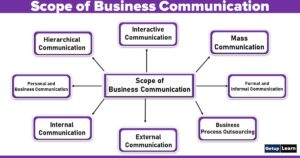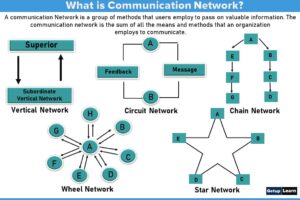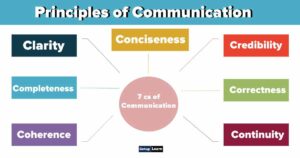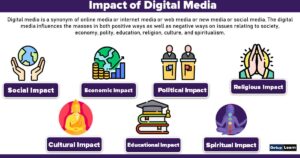Table of Contents
What is Organizational Communication?
Organizational Communication is the process whereby an organizational stakeholder (or group of stakeholders) attempts to stimulate meaning in the mind of another organizational stakeholder (or group of stakeholders) through the intentional use of verbal, nonverbal, and/or mediated messages.
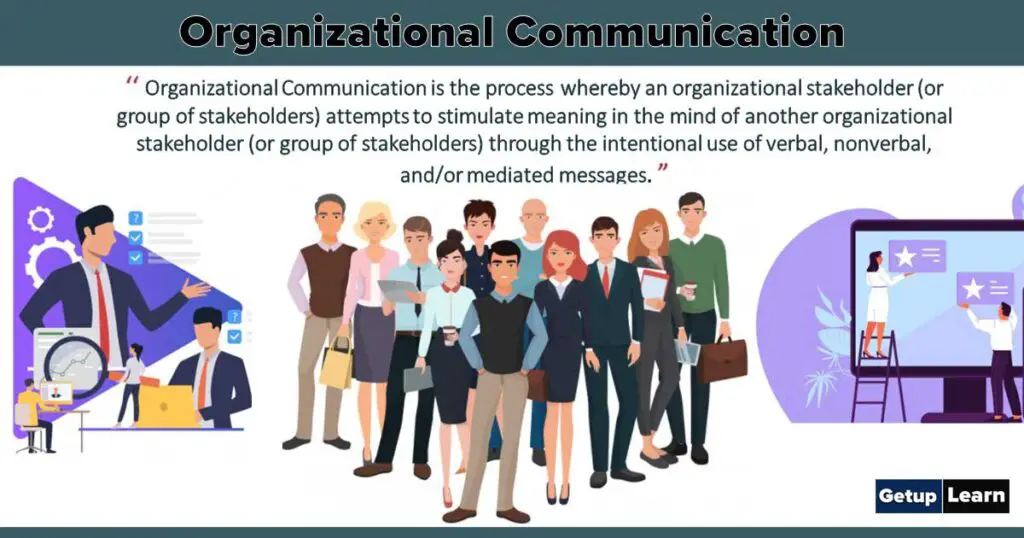
Table of Contents
Communication is one important thing to support the success of the organization both in improving organizational performance and organizational adaptation to any changes in the existing environment. Through good communication between individuals and parties directly involved in organizations and outside the organization, organizations can obtain the necessary information.
Types of Organizational Communication
Organizational Communication can be broadly classified into formal and informal communication. So here are, types of organizational communication:
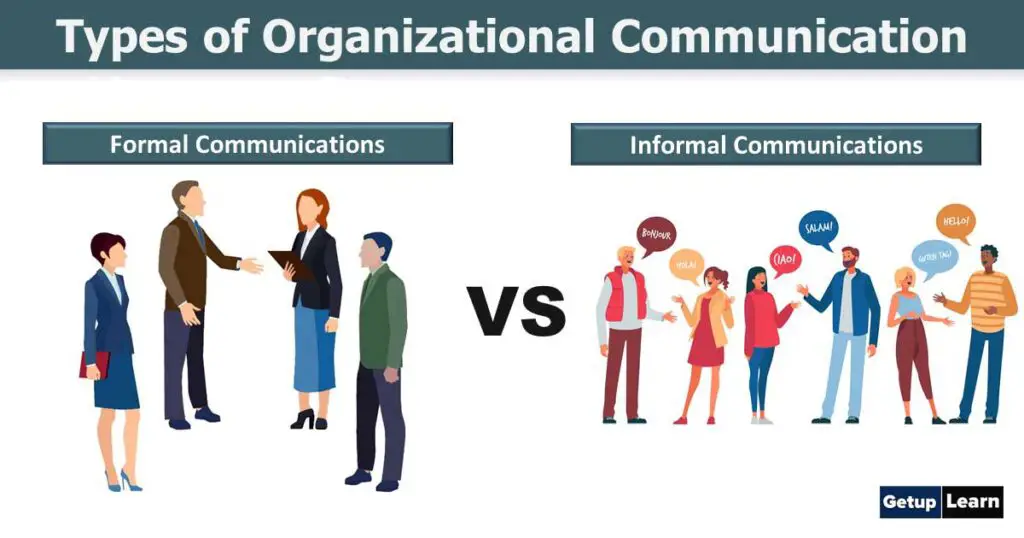
Formal Communications
Formal communications are those that are official, and that are a part of the recognized communication system which is involved in the operation of the organization. These communications may be oral or written. Formal communication can be from a superior to a subordinate, from a subordinate to a superior, intra- administrative, or external.
Formal communications take place externally to the organization i.e. with outside groups, such as suppliers, clients, unions, government agencies, and community groups.
Formal communications may be mandatory, indicative, or explanatory. Mandatory communication implies an order or command to be followed and goes by various euphemistic names such as instructions, briefing, etc., this kind of communication is mostly vertical and usually one way from top to downward. The indicative or explanatory communication may exist between any level and maybe vertical as well as horizontal.
Informal Communications
Informal communications grow out of the social interactions among people who work together. These are not bound by any chart on the wall but are bound by conventions, customs, and culture. Such communication provides useful information for events to come, in the form of grapevine.
This type of information does not flow in a particular direction, as we have seen with formal. The information is also not passed on through official channels such as memos, notices, or bulletin boards. The information need not be circulated within the organization but could be passed on outside the work environment, wherever co-workers or colleagues meet socially.
Directions of Organizational Communication
Communication can be either vertical or downward when considering the flow. Communication that moves in both directions – upwards and downwards is termed Vertical Communication and communication that moves in the lateral direction is termed Horizontal Communication.
Directions of organizational communication can be classified as follows:
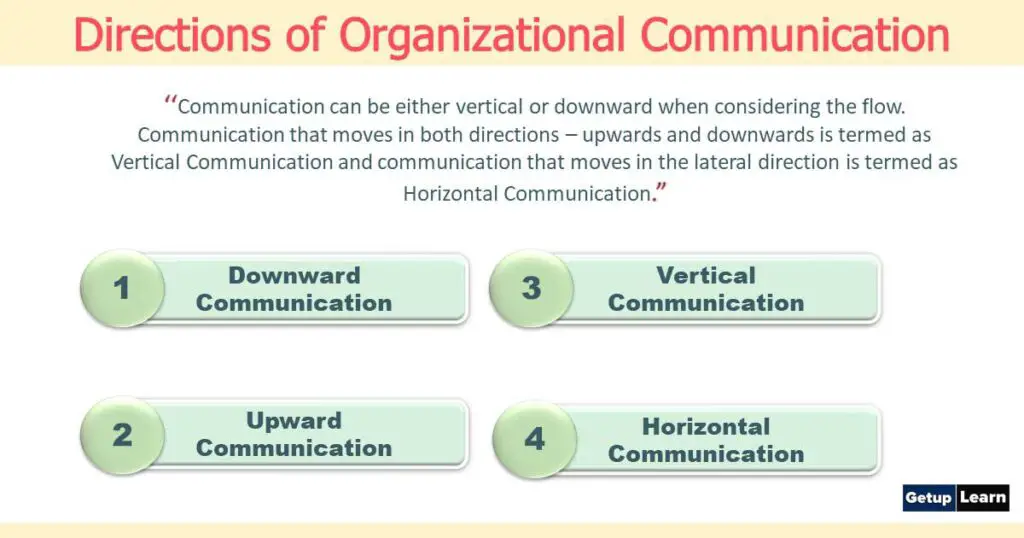
Downward Communication
Downward communication is the information that is exchanged between a manager and a subordinate in other words from the top level to a low level. In the best of cases, the information is clear and direct. The purpose of such communication is to inform about policies, procedures, programs, and objectives and to issue orders and instructions to the subordinates. The information is sent through verbal or written orders.
Upward Communication
It is non-directive in nature. Effective upward communication is possible only when organizations empower their employees and allow them to participate freely in decision-making. Through this type of communication, employees can communicate information to their superiors freely and can voice their opinion.
Horizontal Communication
Horizontal communication is necessary to develop a collaborative and proactive culture in an organization. People communicate with others at their own level, in their own departments or other departments, to solve problems and to share experiences. Devices such as problem clinics and task forces are used for this purpose.
Vertical Communication
Vertical communication occurs between various hierarchies. It may be upward or downward. For example manager to employee, general manager to managers, foreman to the machine operator, head of the department to cashiers, etc. Downward communication is more prevalent than upward communication.
It is suggested that downward communication is most effective if top managers communicate directly with immediate supervisors and immediate supervisors communicate with their staff. The major purposes of downward communication are to advise, inform, direct, instruct, and evaluate employees and to provide organization members with information about organizational goals and policies.
Importance of Organizational Communication
Communication is very important for any organization. The following points highlight the importance of organizational communication:
- Exchanging Information
- Preparing Plans and Policies
- Execution of Plans and Policies
- Increasing Employee’s Efficiency
- Achieving Goals
- Solving Problems
- Making Decisions
- Improving Industrial Relation
- Publicity of Goods and Service
- Removing Controversies
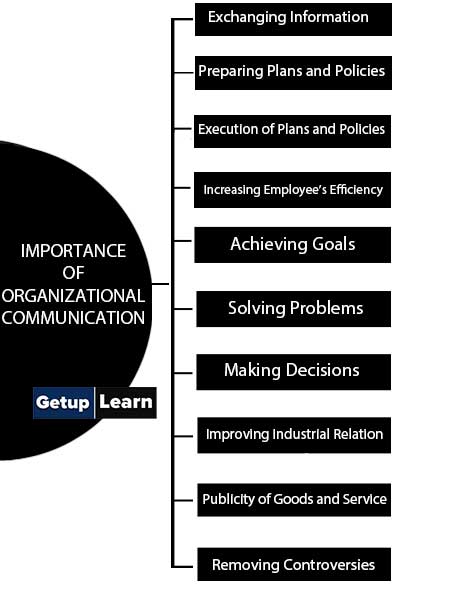
Exchanging Information
Communication is mainly the exchange of information between two or more parties. Through communication, organizations exchange information with internal and external parties. Communication also brings dynamism to organizational activities and helps in attaining goals.
Preparing Plans and Policies
Communication helps in preparing organizational plans and policies. Realistic plans and policies require adequate and relevant information. The managers collect the required information from reliable sources through communication.
Execution of Plans and Policies
Execution of plans and policies for the timely implementation of plans and policies, managers must disseminate those to the whole organization. In order to disseminate the plans and policies to the internal and external parties, managers rely on communication.
Increasing Employee’s Efficiency
Communication also helps in increasing the efficiency of employees. With the help of communication, organizational objectives, plans, policies, rules, directives, and other complex matters explain to the employees that broaden their knowledge and thus help them to be efficient.
Achieving Goals
Effective communication helps the employees at all levels to be conscious and attentive. It ensures the timely accomplishment of jobs and easy achievement of goals.
Solving Problems
Through various communication channels, the managers can be informed of various routine and non-time problems of the organization and accordingly they take the necessary actions steps to solve the problems.
Making Decisions
Making timely decisions requires updated information. Through effective communication, managers can collect information from different corners and can make the right decisions.
Improving Industrial Relation
Industrial relation is the relation between workers and management in the workplace. Good industrial relation is always desired for business success. Communication plays a vital role in creating and maintaining good industrial relations.
Publicity of Goods and Service
In the modern age, business is becoming highly competitive. The almost every competing manufacturer produces products of common consumption. However, all of them cannot sell equally well. An organization that can communicate better, can also sell better.
Removing Controversies
Effective communication allows the smooth flow of information among various parties involved in the negotiation or transaction. As a result, conflicts, controversies, and disagreements can be resolved easily.
Thus, communication serves as the link between all the departments and functions of the organization. Communication has many dimensions. These dimensions make communication in an organization effective and efficient.
Read More Related Articles
[su_spoiler title=”What is Communication? | Mass Communication” style=”fancy” icon=”plus-circle”]
What is Communication?
[/su_spoiler]
[su_spoiler title=”Types of Communication | Principles of Communication” style=”fancy” icon=”plus-circle”]
-
Types of Communication
- Verbal Communication
- Non-Verbal Communication
- Written Communication
- Visual Communication
- Feedback Communication
- Mass Communication
- Group Communication
[/su_spoiler]
[su_spoiler title=”Nonverbal Communication | Verbal Communication” style=”fancy” icon=”plus-circle”]
[/su_spoiler]
[su_spoiler title=”Written Communication | Oral Communication” style=”fancy” icon=”plus-circle”]
Written Communication
[/su_spoiler]
[su_spoiler title=”Business Communication | Organizational Communication” style=”fancy” icon=”plus-circle”]
[/su_spoiler]
[su_spoiler title=”Formal Communication | Informal Communication” style=”fancy” icon=”plus-circle”]
Formal Communication
[/su_spoiler]
[su_spoiler title=”Interpersonal Communication | Informal Communication” style=”fancy” icon=”plus-circle”]
[/su_spoiler]
[su_spoiler title=”Downward Communication | Upward Communication” style=”fancy” icon=”plus-circle”]
Downward Communication
[/su_spoiler]
[su_spoiler title=”Barriers to Communication | Horizontal or Lateral Communication” style=”fancy” icon=”plus-circle”]
[/su_spoiler]
[su_spoiler title=”Self Development | Effective Communication” style=”fancy” icon=”plus-circle”]
[/su_spoiler]
[su_spoiler title=”Difference Between Oral and Written Communication | Theories of Communication” style=”fancy” icon=”plus-circle”]
[/su_spoiler]
What are the major types of organizational communication?
Organizational Communication can be broadly classified into formal and informal communication.
What are the 4 directions of communication?
Directions of organizational communication can be classified as follows: Downward Communication, Upward Communication, Horizontal Communication, and Vertical Communication.
What is the importance of organizational communication?
Communication is very important for any organization. The following points highlight the importance of organizational communication: Exchanging Information, Preparing Plans and Policies. Execution of Plans and Policies, Increasing Employee’s Efficiency, Achieving Goals etc.






